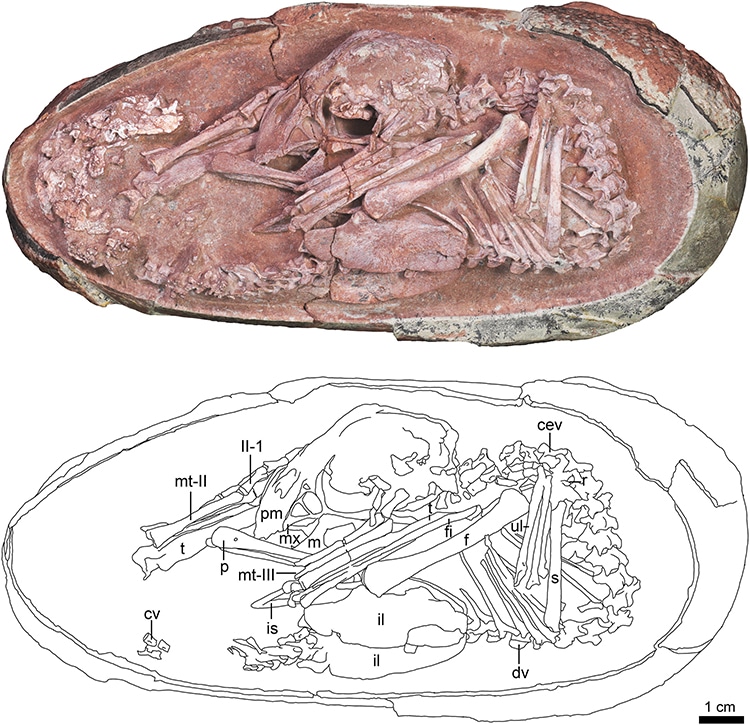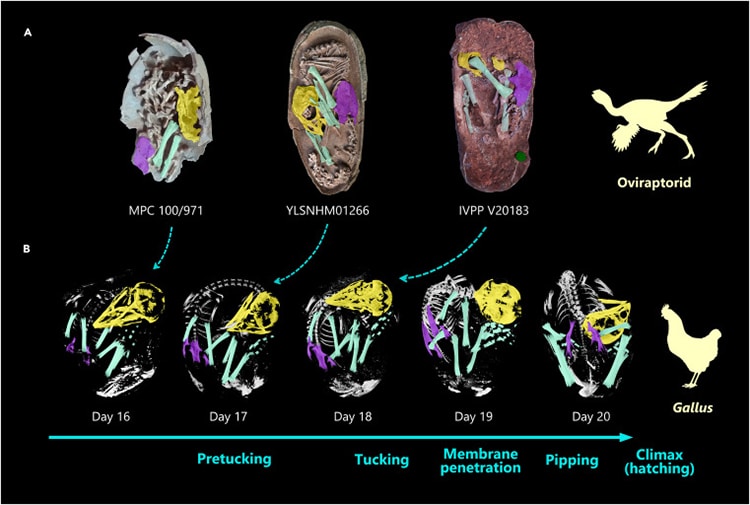The very well-preserved oviraptorosaur embryo known as Baby Yinglian.
(Photo:Fig.
1/Courtesy Xing et al., 2021)
Many dinosaurs emerged into their prehistoric world from large eggs.

The very well-preserved oviraptorosaur embryo known as Baby Yinglian. (Photo:Fig. 1/Courtesy Xing et al., 2021)
Despite finding nests and eggshells, it is rare for scientists to discover an intact fetus.
Curled inside is a well-preserved skeleton of a fetaloviraptorosaur, a three-toed dinosaur with hollow bones.
The fossilized egg in question arrived at the Yingliang Stone Nature History Museum in Nanan, China in 2000.

Three views of the skeleton of the oviraptorid embryo. (Photo:Fig. 2/Courtesy Xing et al., 2021)
In 2015, a researcher noticed something poking out of a cracka tiny bone.
Splitting the egg in half revealed a perfect little skeleton curled inside.
Its oviraptorosaur parent would havesat upon the nestlike a modern bird, guarding its clutch of eggs.

Developmental stages of a non-avian dinosaur compared to a domestic rooster. (Photo:Fig. 3/Courtesy Xing et al., 2021)
The tiny skeleton has its head tucked under its right arm.
This is the first example of tucking seen in non-avian dinosaurs.
Tucking allows baby birds to position their beaks optimally in the last few days of gestation.
Once in position, they have the best shot of cracking open their eggs and emerging into the world.
While many dinosaurs had soft-shelled eggs, the oviraptorosaur had a hard shell.
Scientists discovered one of the best-preserved examples of a dinosaur embryo curled up in its egg.
Three views of the skeleton of the oviraptorid embryo.
(Photo:Fig.
Developmental stages of a non-avian dinosaur compared to a domestic rooster.
(Photo:Fig.